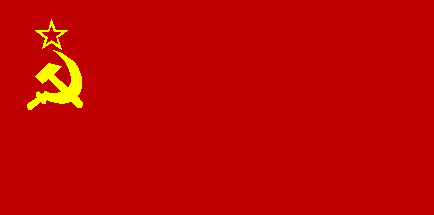





The Council of Ministers was responsible for implementing the party's broad directives. It frequently issued decrees that reflected science and technology decisions made by the Politburo. These decrees served as the base on which science and technology plans and programs were formed. The council also confirmed the five-year plans and the annual plans for science and technology, developed measures to improve management of research and development, and resolved issues relating to authors' and inventors' rights, cadre training, and labor wages. The council operated primarily through its Presidium, whose membership included heads of many agencies concerned with science and technology.
The Council of Ministers and its agencies carried out the following tasks of government: internal and external security of the state; economic development, management, and administration; and ideological instruction and education. The council enacted the decisions of the party and therefore administered, through its bureaucratic regulatory and management arms, every aspect of Soviet life. As its primary task, however, the council managed the economy.
The Supreme Soviet ratified council membership as submitted by the chairman of the Council of Ministers. However, the actual selection of council ministers was made by the party leadership as part of its nomenklatura authority and was only later confirmed by a vote of the Supreme Soviet. Until recently, the Supreme Soviet endorsed such decisions unanimously and without debate. In mid-1989, however, Ryzhkov was forced to withdraw some candidates for ministerial posts because some of the committees of the Supreme Soviet objected that the candidates were unqualified, thus forcing him to submit alternative candidates. The Council of Ministers had the power to issue decrees, which carried the same force of law as legislative acts of the Supreme Soviet. The Supreme Soviet or, indirectly, the Congress of People's Deputies, could annul a decree if it found the decree to be in violation of the Constitution or an existing statute (perhaps upon the recommendation of the Constitutional Oversight Committee). Orders of the Council of Ministers on administrative matters technically did not carry the force of law, but they were binding on the ministerial apparatus. Although some decrees were published, most remained secret. In 1989 the Council of Ministers had more than 100 members, including the ministers, the heads of government bureaus and state committees, and the chairmen of the councils of ministers of the fifteen constituent republics. Soviet scholars maintained that the Council of Ministers met "regularly," but reports in the press indicated that full meetings occurred only quarterly to hear and ratify a plan or a report from the chairman. In reality, the Council of Ministers delegated most of its functions to its Presidium or to the individual ministries. Ministers were the chief administrative officials of the government. While most ministers managed branches of the economy, others managed affairs of state, such as foreign policy, defense, justice, and finance. Unlike parliamentary systems in which ministers are members of the parliament, Soviet ministers were not necessarily members of the Supreme Soviet and did not have to be elected. Soviet ministers usually rose within a ministry; having begun work in one ministry, they could, however, be appointed to a similar position in another. Thus, by the time the party appointed an official to a ministerial position, that person was fully acquainted with the affairs of the ministry and was well trained in avoiding conflict with the party. Until the late 1980s, ministers enjoyed long tenures, commonly serving for decades and often dying in office. Two types of ministries made up the ministerial system: allunion and union-republic. All-union ministries oversaw a particular activity for the entire country and were controlled by the allunion party apparatus and the government in Moscow. Republic governments had no corresponding ministry, although all-union ministries had branch offices in the republics. Union-republic ministries had a central ministry in Moscow, which coordinated the work of counterpart ministries in the republic governments. Republic party organizations also oversaw the work of the unionrepublic ministries in their domain. The Constitution determined into which category certain ministries fell. The Ministry of Foreign Affairs was a unionrepublic ministry, reflecting the republics' constitutional right to foreign representation. All-union ministries were more centralized, thus permitting greater control over vital functions. Union-republic ministries appeared to exercise limited autonomy in nonvital areas. In practice, the central government dominated the union-republic ministries, although in theory each level of government possessed equal authority over its affairs. Union-republic ministries offered some practical economic advantages. Republic representatives in the union-republic ministries attempted to ensure that the interests of the republics were taken into account in policy formation. In addition, the arrangement permitted the central ministry to set guidelines that the republics could then adapt to their local conditions. The central ministry in Moscow also could delegate some responsibilities to the republic level. The internal structures of both all-union and union-republic ministries were highly centralized. A central ministry had large functional departments and specialized directorates. Chief directorates carried out the most important specialized functions in larger ministries. Specialized functions included foreign contracts, planning, finance, construction, personnel, and staff services. The first department of any ministry, staffed by personnel from the Committee for State Security (Komitet gosudarstvennoi bezopasnosti--KGB), controlled security. State committees and government agencies similarly were categorized as all-union and union-republic organizations. State committees oversaw technical matters that involved many aspects of government, such as standards, inventions and discoveries, labor and social issues, sports, prices, and statistics. Other agencies, such as the news agency TASS and the Academy of Sciences, oversaw affairs under their purview. Ministries and state committees not only managed the economy, government, and society but also could make laws. Most ministries and state committees issued orders and instructions that were binding only on their organizations. Some ministries, however, could issue orders within a legally specified area of responsibility that were binding on society as a whole. These orders carried the same force of law as acts of the Supreme Soviet. For example, the Ministry of Finance set the rules for any form of foreign exchange.